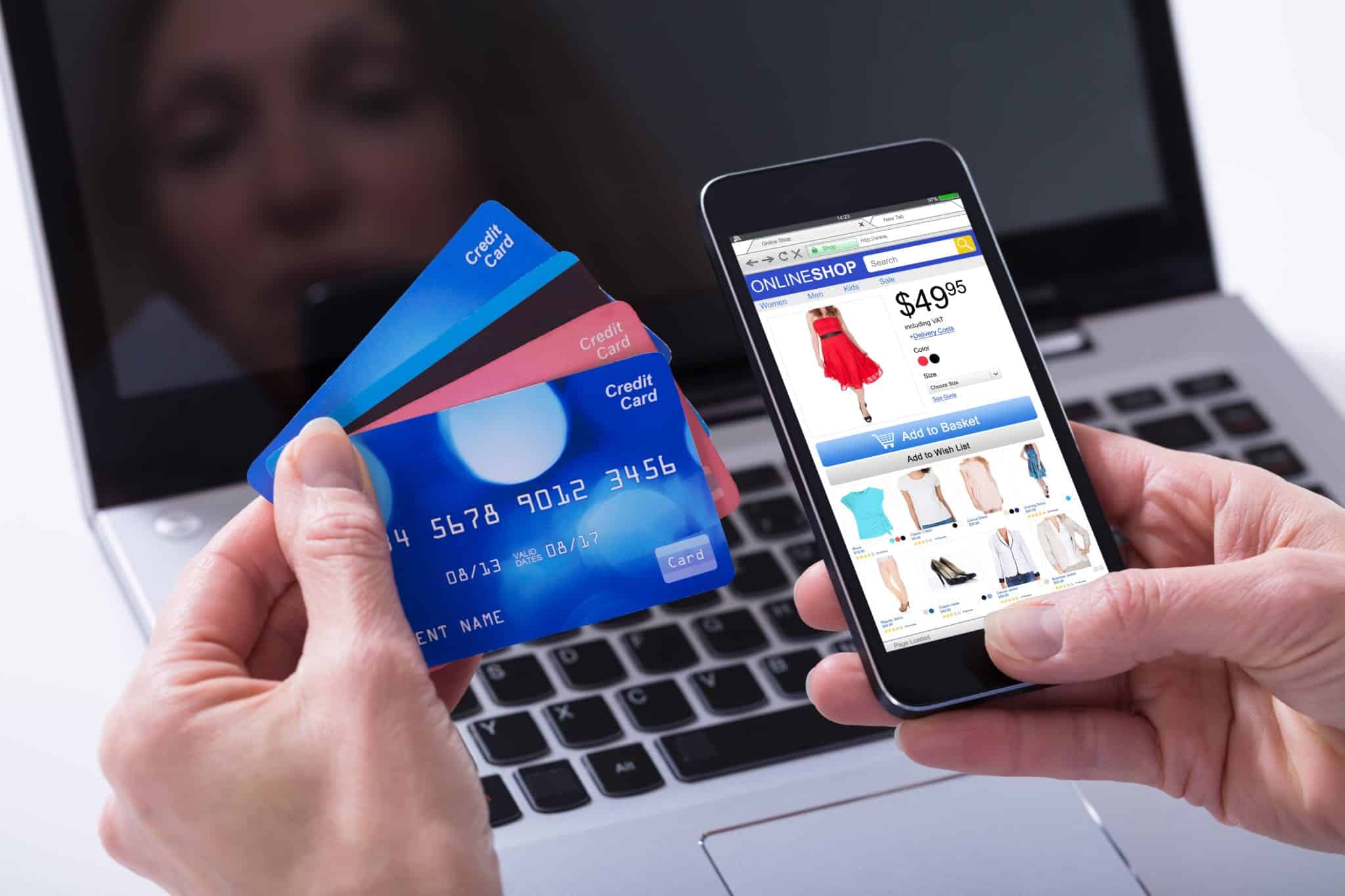Starting a digital commerce business may look complicated at first.
So, to help you get started, I’ll define all the steps you must take. HINT: There are 10 of them.
First off, I’d like to point out that digital commerce is very much like eCommerce. Heck, it’s almost the same thing.
The main difference is that digital commerce deals only with digital goods and services. That’s right; no tangible goods are sold here.
Now when we know the main difference between traditional eCommerce and digital commerce, let’s dive in!
Step 1: Research the Industry You’re Entering
When you’re trying to enter a specific industry, you must research it as much as possible.
You’ll want to know everything – its size, growth rate, latest trends, and much more. When searching for that information, I like to recommend these three websites:
- Nielsen
- Pew Research Center
- MarketResearch.com
These three are some of the most trusted and most prominent sources of information available. These sources are always a good starting point when researching an industry.
Also, you may want to start with a simple Google search.
Around 15% of daily Google searches are entirely new, according to Google. This just points out how fast does Google’s database increase.
This may reassure you that you’ll most likely find an answer to your question.
Always be specific. The more specific your question is, the more accurate answer you’ll get.
Let’s see how it could work on an example.
For the sake of example, let’s say you’re offering online video courses on fitness and healthy nutrition.
Your first Google search may be “online fitness course market reports”. And even the first result you get may be of great interest.
And in our case – it is.

This just shows how much information you can gather just by simply using Google search.
And if that’s your first encounter with a specific industry, try reading as many industry articles as you can.
It will give you a better insight into the industry, and you’ll get the idea in what direction the industry is going.
Another useful tool you could use to gain more insight and identify the trends of an industry is Google Trends.
Here’s a snapshot of Google Trends. Here you can compare search terms in various forms to find out if there’s any correlation between search terms or if there are any new trends.
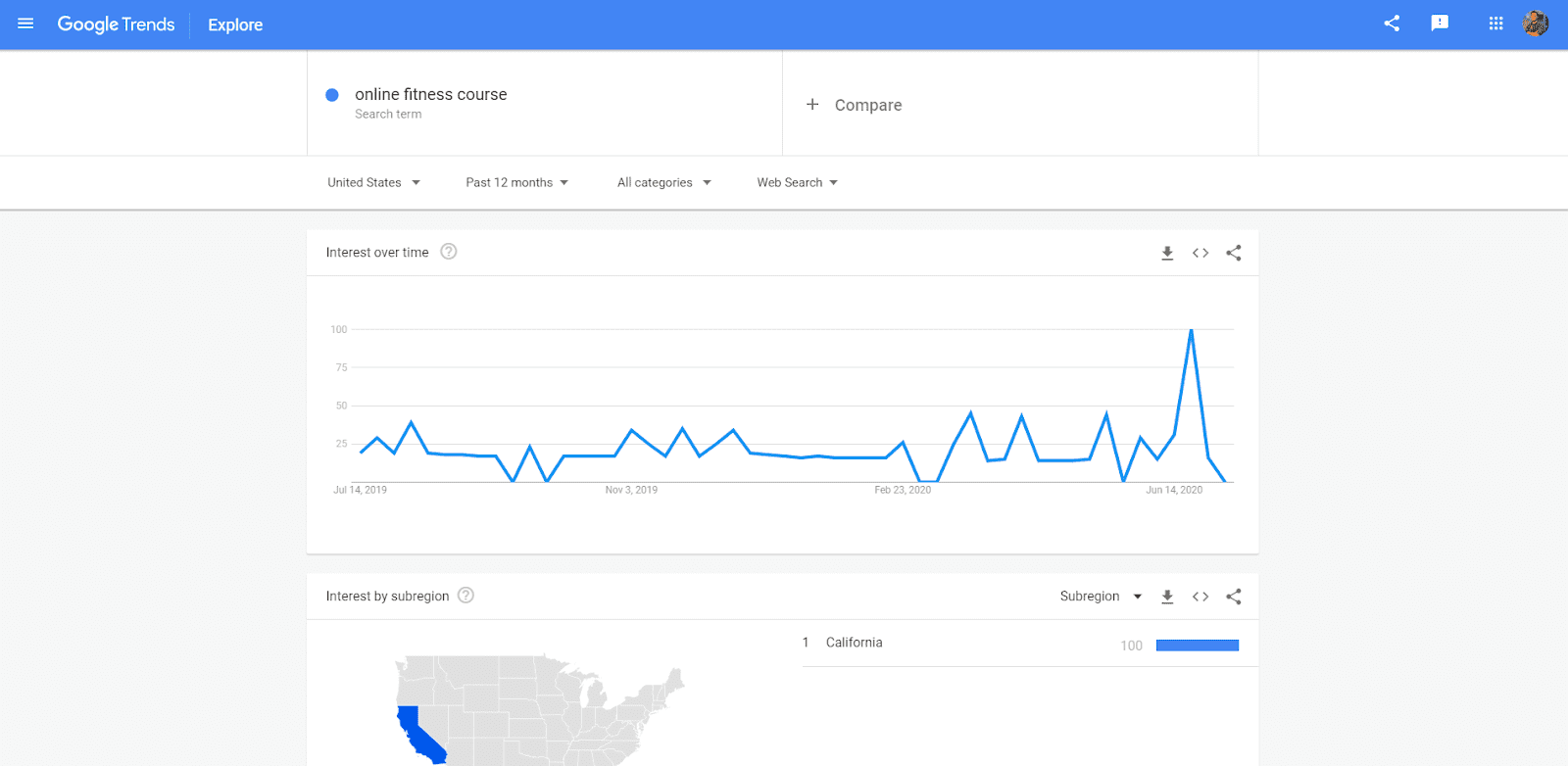
We can see a rise in the search for online fitness courses as people try to better their health in the summer months. Customers are staying indoors this year, and they’re searching for an alternative for a gym.
After giving it some thought, this may seem like a great opportunity if you’re a fitness expert!
And after you’ve finished analyzing the industry, it’s time to move on to the next step.
Step 2: Find Your Customers
It’s crucial to find out who your customer is.
You’d want to know who is that person that’s continuously buying your online courses. All of those customers must have something in common.
And they do.
To find out the real face of your customers, you’ll want to create a buyer persona.
A buyer persona is a semi-fictional representation of your ideal customers based on market research and all the currently existing data on your customers.
Creating a buyer persona will enable you to focus your efforts on specific channels and specific groups of potential buyers.
But before you jump in and create your first buyer persona, you’ll want to outline some criteria. Not everyone gets to be a part of your buyer persona.
For instance, you may want to find out if they exercise daily, if they eat healthily, if they are getting enough sleep, what body type do they have, how much they are earning, and even how educated they are.
That’s a lot of questions. And there will be some more.
The greatest lesson you can get from this is – work smarter, not harder.
To create smart marketing campaigns, be extremely specific when researching your customers.
But before that, you’ll want some firsthand knowledge.
Research the Customers and Identify the Buyer Personas
When it comes to researching customers, there are many different options to explore.
Here’s a checklist for identifying your buyer personas. Let’s go through each one of those points on the list.
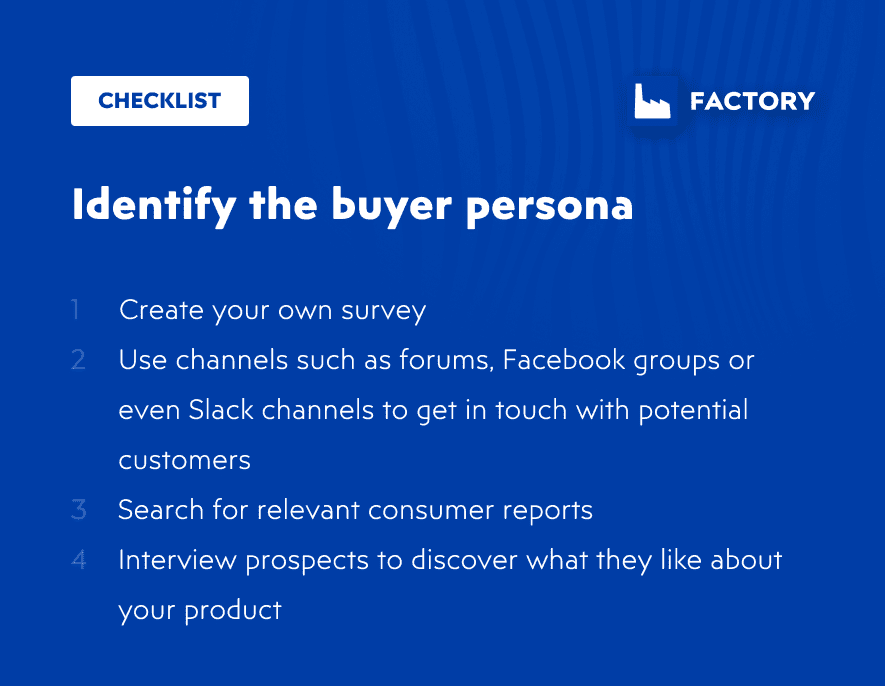
First, we can start with a simple query on Google.
I’ll give you an example.
Let’s say you’re looking for potential customers for your online fitness course. So, how could we leverage Google to help us find them?
You can search for forums on fitness or even visit a few fitness websites to find out what your customers are talking about daily.
Also, you could search for Facebook groups that revolve around fitness and a healthy lifestyle.
That’s the information you’re going to need. You want to really get to know your customers, and you need to know what are their pain points and their greatest obstacles.
So, to gather relevant information, you’ll want to create a survey for your potential customers.
A survey is the most straightforward method of primary research. You’ll quickly get firsthand information from the people you want to get it.
You can create a survey by using Google Forms or Survey Gizmo, for instance.
P.S. They’re both free!
And just a tip for your survey – be as specific as it gets!
Always remember, the more specific questions you ask, the more accurate answers you’ll get.
So, when you’re done with creating your surveys, contact Facebook group administrators, and publish your survey in those groups. Interact with your potential customers and ask them for help with your inquiry.
Another excellent method of researching your customers is analyzing customer reports.
We’ve talked about consumer reports in the previous chapter. They serve a great purpose in researching the customers and analyzing the entire industry.
They get pretty useful, especially when you’re trying to find out more about your customers.
And now, let’s head to the next step in the process – your competition.
Step 3: Research Your Competitors
It’s safe to say that you’re going to have a good amount of competitors in every industry.
It can get tough to enter an industry already filled with competition. So, to position yourself as a good competitor, you’ll want to analyze your competition.

Here are a few questions you’ll want to be answered regarding your competition:
- What’s their name?
- Do they have a website?
- How does their website look?
- How does their website work?
- What prices are they setting?
- How are they describing their offerings?
- What are the key features of their products?
These questions could help you make new decisions about your products, pricing, and even ads.
To have all of this information easily accessible, try to write it all down in a spreadsheet.
Now when you’ve got this information ready, you must go deeper. Think about how you can upgrade this analysis with more relevant information.
One idea is to identify the strengths and weaknesses of your competitors. Find out if there is some gap that your competitors didn’t cover and be the first one to do it.
Also, write all of this information in your spreadsheet. It’ll make your competitor analysis much more organized.
You’ll want some more information on your competitors. Check out how your competitors are communicating with their customers, what’s their unique value proposition, and how they are dealing with customer objections.
Answers to many of your questions reside in this research. Not to mention, your competitors may serve you as an excellent inspiration. Keep that in mind.
Here’s an example of a gap.
What if your audience is almost exclusively using mobile phones, but your competitors don’t have a mobile app?
This could be your chance. For example, you could decide then to build an eCommerce mobile app and stand out in the crowd.
Here’s another checklist with questions you’ll want to answer.
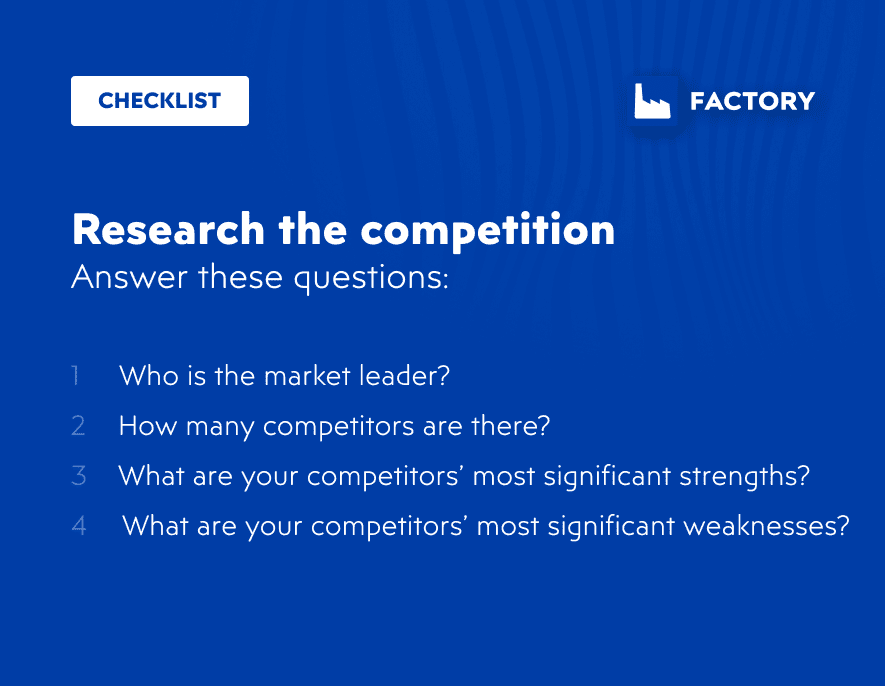
Another good advice is to list as many competitors as you can (at least 10). Again, put it all in a spreadsheet, so it’s easily accessible.
Here, you’ll want to see if they have something in common, whatever it may be. They probably do have many things in common, but that’s for you to explore.
If they do, you could use this information to improve your communication or product offering to create better relationships with your customers.
And now, let’s head to the next step, the legal one.
Step 4: Register Your Digital Commerce Business
This step may seem a bit boring, but it’s crucial to get this done before you open your business.
Registering your business brings you legal protection and tax benefits, so you can already see why it could be beneficial for your business. Also, it’s mandatory, so don’t skip it!
After registering your business, you’ll need to handle a few more things, such as brand name, visual identity (logo, colors, font,…), and other creative tasks.
Before you open your business and start selling, you’ll want to secure all of the necessary business licenses and permits. You don’t want to have any legal issues, that’s for sure.
To find out what kind of licenses and permits you need, contact your local, regional, and state offices. They’ll have more information, and they’ll be happy to help you. This applies to any country you’re trying to start a business in.
Next, you need a business bank account. That’s also mandatory, as you’ll need it as a destination for all the funds from the sales.
Here’s another checklist so you can keep in mind all of the essential steps:
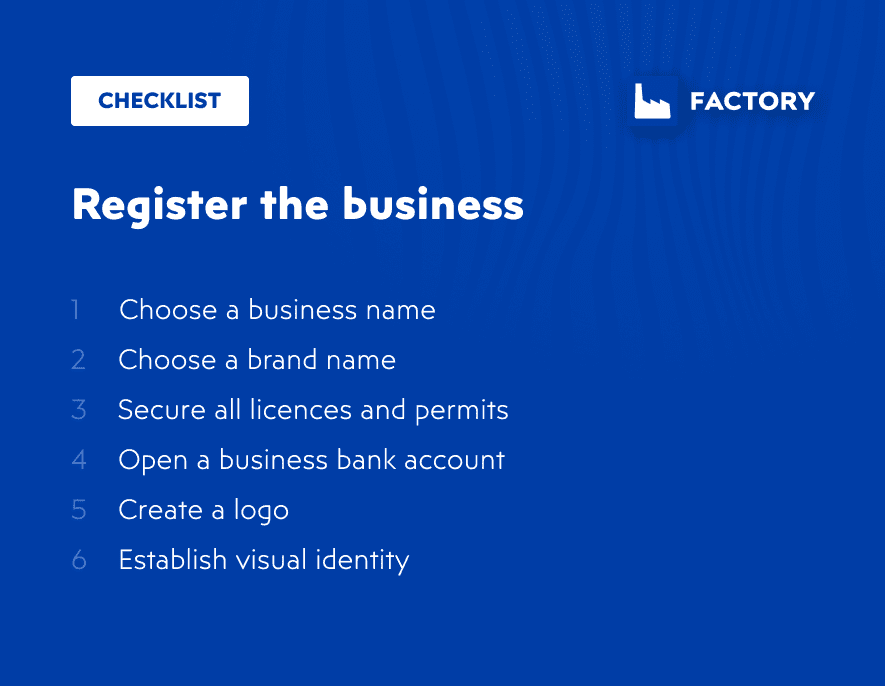
Now, let’s talk more about your products.
Step 5: Find the Digital Product You’re Going to Offer
For the sake of example, let’s say you’re still thinking about offering online fitness courses.
But let’s get specific here.
What kind of fitness course is it going to be? For what kind of customers? Are you going to develop courses for beginners or advanced fitness enthusiasts?
Even though it depends on what you want to do, but do pay attention to the current trends in the industry. Also, use your buyer persona information to create a unique product.
And if you’re not going to offer online fitness courses, here are a few examples of digital products you could offer.
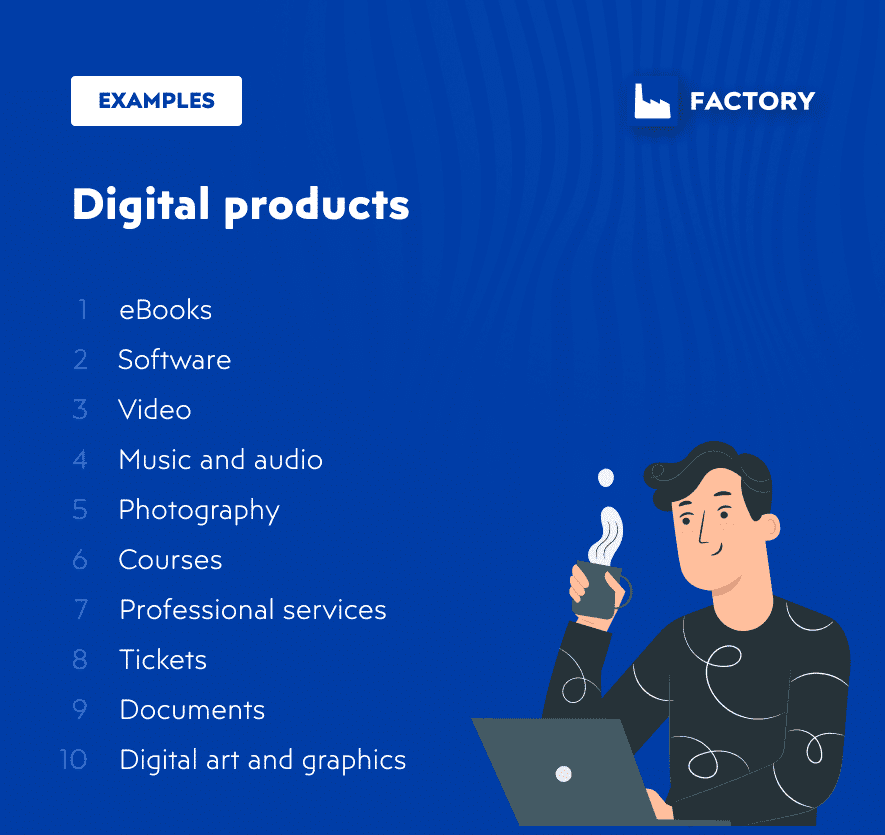
You’ll notice that none of these products are tangible goods. Digital commerce consists only out of digital products in its offering, so keep that in mind!
There are a few types of digital products, so let’s go through them right now!
Three Types of Digital Products You Could Offer
There are three different types of digital products we’ll list in this chapter. Of course, there are many more types of digital products. These are three basic types of digital products you may offer, so keep reading.
Convenience Products
Convenience products are digital products meant for more frequent purchases.
Customers usually put less effort into buying this type of product, and their price tends to be lower.
For example, let’s take a look at photographs. They’re not too expensive, and there’s almost no significant effort in buying them.
You can buy photographs from many different websites in just a few clicks. This makes them a perfect convenience product.
Shopping Products
Now, when we’re talking about shopping products, we can compare them easily to convenience products.
They’re somewhat more expensive than convenience products, and there may be a little bit more effort in the whole buying process.
For instance, we could say that ebooks are shopping products.
Specialty Products
These are the most valuable ones. They are more expensive than the previous products we named and the demand for them is somewhat lower.
And yet, their price tends to be much higher.
Let’s take an example.
For the sake of this example, let’s say you’re still in the fitness industry. A fitness course may be an excellent specialty product here.
You can upsell your existing customers who have bought your ebook, for instance.
You may sell a lower number of these specialty products, but still – their price is much higher than the price of an ebook.
Future Products
You’ve already sold a few eBooks, and your customers love it.
Could you offer them anything else to fulfill their needs?
There are some types of product offerings you want to look into, such as:
- Core products
- Cross-selling products
- Upselling products
- Tripwire products
Each type of product offering has its own unique purpose.
Core products are the base of your offer, and they are your primary focus. On the other hand, a tripwire product is a product you’re using to attract more customers.
For example, let’s say an eBook is a tripwire product, while an online course may be a core product.
Try to build your product strategy around these offerings. Start with a basic tripwire offer and work on upselling your customers and providing them with as much specialized knowledge as you can.
When talking about digital products, there are some key advantages when compared to traditional products.
They don’t need to be stored in a warehouse, they don’t have high production costs, and they’re easily distributed to all of your customers.
All of your digital products could be stored in cloud storage, meaning that they’re easily accessible at any given time.
Step 6: Create a Marketing Plan
Creating a marketing plan is a vital task for your digital commerce business.
Here, you’ll determine how you’re going to bring new users to your website and turn them into happy customers.
I’ll give you a few examples here so it’ll be somewhat easier to start.
When creating your marketing plan, you’ll have to pull up all the data you’ve gathered in your research.
You’ll need to have a deep understanding of your customers, so it would be great to use a buyer persona to target them better.
It’ll help you put your efforts in the right place.
And now, when you’ve found your buyer personas, it’s time to get down to business and bring you some new customers!
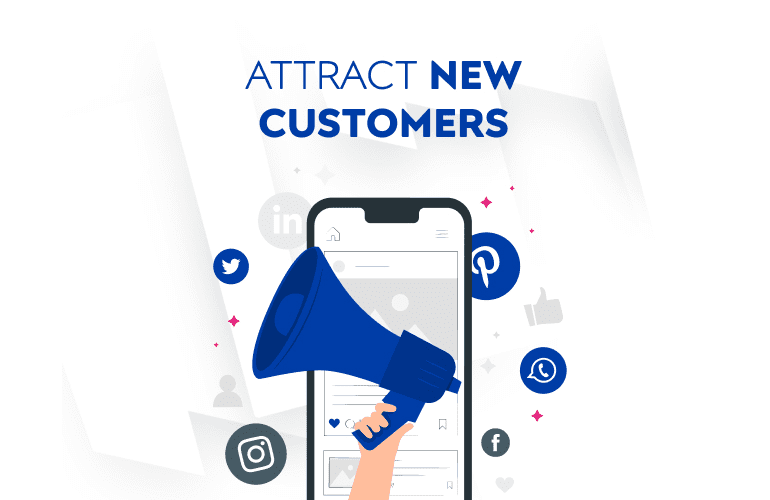
Choose a Marketing Channel
Now, to spread your message to your target audience, you’ll need to choose the marketing channels you’re going to use.
We can divide those marketing channels into 2 main groups – organic and paid.
Let’s take a quick look at each channel.
Organic Marketing Channels
Even though organic channels are non-paid, they’ll still require a certain amount of time and a specific skill set to be used properly.
They may not bring you any concrete results in the first two weeks, but in the long-term, they’ll have an enormous impact.
I’ll name just a few organic channels here.
- Social media
- Search engine optimization (SEO)
- Content marketing
Each one of these requires not its own article, but it’s own detailed step-by-step course.
Learning to use these channels requires a certain amount of time and effort, but it’ll definitely pay off!
Paid Marketing Channels
Paid channels, as the name suggests, differ from the organic ones in terms of cost.
They have an enormous potential to rake in the profits much faster, but with that comes a risk. It could happen that your ad campaigns aren’t really the best ones, and you might end up even losing the money you invested.
Even so, handling these paid marketing channels is just another skill to learn – and it may not be that difficult!
Here are some commonly paid marketing channels:
- Google Ads
- Facebook Ads
- Affiliate advertising
- Influencer marketing
Now, you may put the most of your efforts into one of those, but to win this marketing game, you’ll want to find the best mix of paid and organic channels.
It may prove as a challenge, but that’s just one of those you’ll overcome.
Here’s a short reminder of channels you could use in the future.
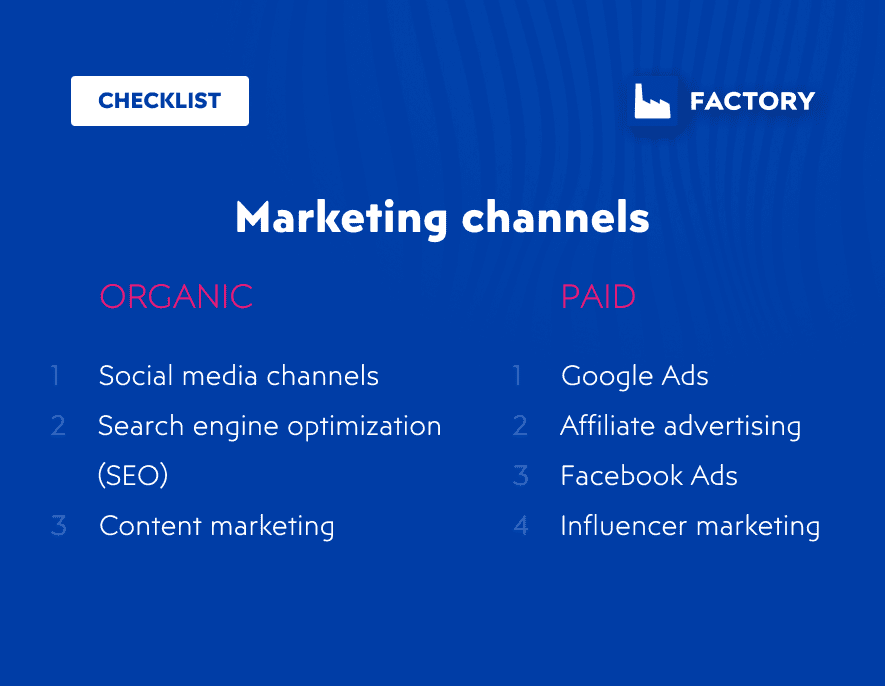
Don’t rush when creating your marketing plan.
Marketing your products may even prove to be the most critical part of your entire business.
And the key to remember here is that you can’t do everything by yourself.
You’ll want to find some new talent for your business. Here’s a quick list of conventional roles in the digital commerce business that could help you realize your goals:
- Copywriters
- SEO specialists
- Google Ads specialists
- Social media marketers
- Influencers
- …
To execute your marketing plan properly, you’ll need to plan it SMART!
How to Set SMART Goals?
Let’s break down what a SMART goal even is.
- Specific – You’ve clearly defined the goal of increasing.
- Measurable – Success can be measured by the increase in revenue expressed in percentage
- Achievable – By increasing your advertising budget by 10%, it’s possible to increase your revenue by 20%
- Realistic – You’ve set the goal in a way that it’s realistic; an increase in the advertising budget usually leads to an increase in sales revenue.
- Timely – You’ve set a deadline for achieving your objective in the next three months.
Setting your goals with the help of this SMART framework will help you reach your goals much faster.
It’ll help you to create a clear roadmap for your digital commerce journey and identify the resources you’ll need.
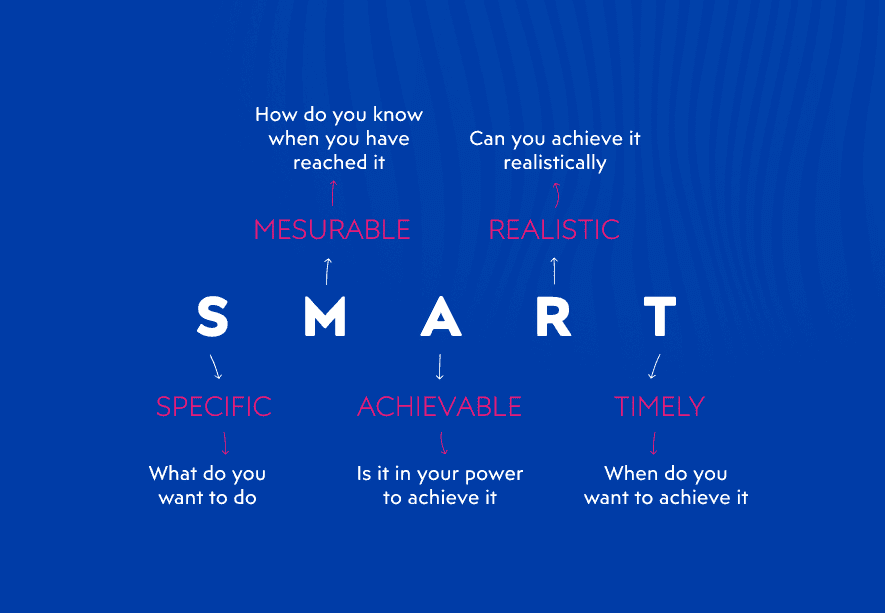
And now, when you’ve set your SMART goals, it’s time to create a financial plan for your digital commerce business.
Step 7: Create a Financial Plan
When you’ve created your marketing plan, you’ll want to see how much it will cost you to get it all in motion.
Also, consider that you’re going to need a new website built and here you’ll be met with some expenses.
Now, the primary purpose of this financial plan is to see how long it will take to make sure you profit. By creating a financial plan, you’ll be able to forecast future sales and expenses.
You’ll have a better understanding of what it will take to make your business profitable and how you’re going to do it.
These are some of the items that could show up in your financial plan.
- Fixed expenses – Constant expenses. No matter how much you’re in profit, these expenses remain the same.
- Variable expenses – Expenses that vary depending on your sales. They may be a lot lower than usually considering you’re selling digital products.
- Projected revenue – A formula that helps you project how much money you’ll be earning from your sales.
Here’s a simple formula for projected revenue.
Projected revenue = Number of products sold / average product price
Now, you’ll want to know just how many products you need to sell to meet your goals.
Also, you need to know how much you are profiting from a single product.
And you’ll need to count on your marketing expenses to make sure everything is covered.
Many different models could help you determine how much you’re going to profit with your digital commerce business, and it would be great to check out the profit equation and break-even analysis.
When you’ve crafted your financial plan, it’s time to start building your website.
Step 8: Build Your Digital Commerce Website
First, you’ll want to consider which platform you’re going to use to market your products.
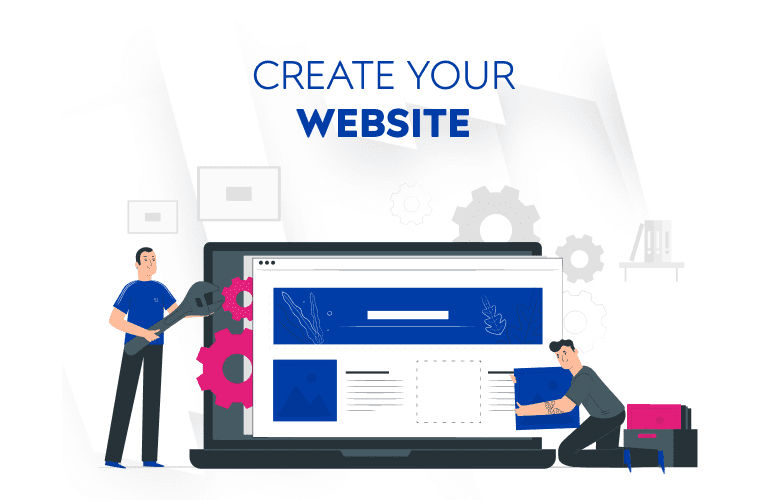
There are many aspects you should consider before opting out with a platform, such as:
- Loading speed
- Specific features
- Payment gateways
- SEO-friendliness
- Data management capabilities
- Etc.
Not every platform offers the same set of features, so make sure you check out this complete list of features that could appear on your website.
Here’s a quick overview of a few great platforms for digital commerce you could choose.
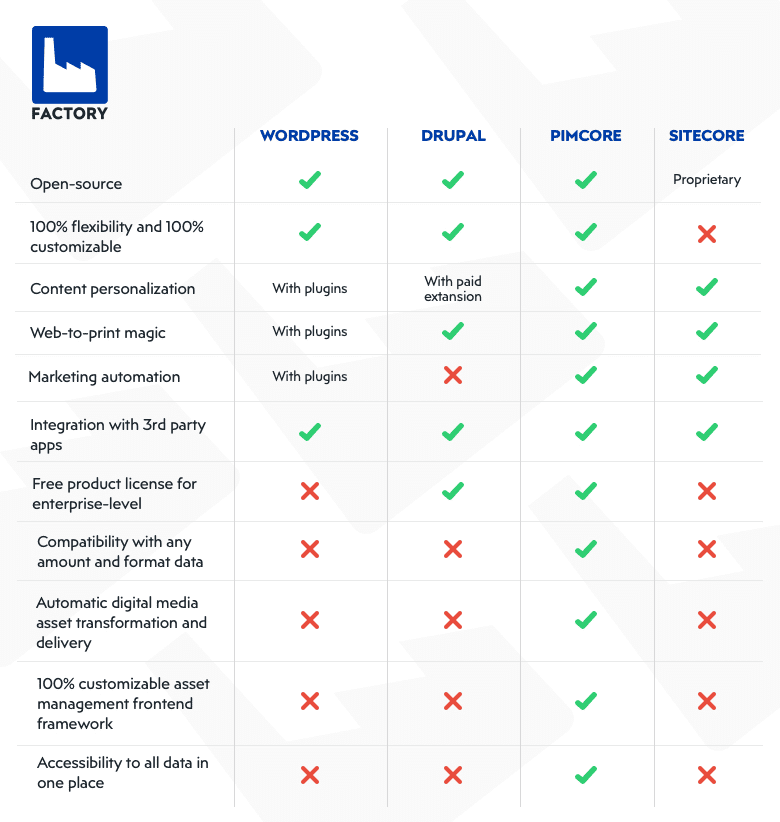
Make sure that you’re thinking about security, content, and data management capabilities and costs when you’re choosing your platform.
You may not have a large team of developers ready for your project, so it could be a great option to find a solution partner to help you out with this.
After your website is finished, you’ll want to make sure that you’re providing the best customer service you can! Let’s see what that’s all about.
Step 9: Establish Great Customer Service
It’s safe to say that there are going to be customers who need your help.
Or they have a complaint about some of their orders.
In any case, you’ll need to take care of them and provide them with the best customer service you can.
Here are listed some of the excellent practices you could use to step-up your customer service game.
Self-Serving Options
If a few customers already reported the same issue, it would be good to provide all of your customers with a direct answer in your FAQ section.
Besides FAQ, you could even implement AI chatbots and hire some customer support agents to help your customers in real-time!
This will minimize the number of reported issues and increase their satisfaction. Not to mention that it’s a great opportunity to improve your customer relationship.
Social media
Social media profiles may serve you great as a channel for providing customer support.
Many of your customers may turn to you on your social media and ask some questions regarding your offers and their orders.
It’s key to provide a transparent and authentic answer to your customers and provide it as quickly as possible.
Your social media specialists may prove here to be an extremely worthy asset to your business.
Quick response
When your customers turn to you to ask for some help, they won’t be satisfied if they wait for an answer for a long time.
They have the power to end their shopping process in just one click, and you’ll need to make sure that click doesn’t happen.
The more they wait, the more distracted they’ll get and eventually even leave the site.
One of the significant areas of your focus here should be to minimize the response time. Tools such as chatbots may prove useful, as they provide an instant answer.
Time is of the essence!
Step 10: Launch Your Business
This is it. The last step you’re going to take.
Now, before you start, make sure everything is ready for the big launch.
But before you start, remember that this may be too much for a single person to handle.
Consider getting help for building your digital commerce business and make sure the partner is trustworthy.
If you’d like some more information on digital commerce and how to make it big, be sure to shoot me up anytime! I’ll be more than happy to help!
I love seeing new businesses thrive during this worldwide recession, and it’s what keeps the world going.
All the best luck and I’m looking forward to getting in contact with you!
DepositPhotos – e-commerce website

